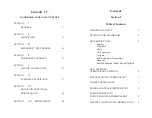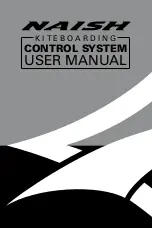
EN-1320
OPERATION AND INSTALLATION MANUAL
6.2. 300-HOUR / ANNUAL INSPECTION
NOTE: Detailed inspection must be performed at 300-hour intervals of operation, not to exceed
12 calendar months. For possibility of flexible inspection schedule the required hour
interval may vary plus/minus 30 flight hours.
1) Visually inspect the blade surfaces and leading and trailing edges for damage. Remove all
nicks, gouges and scratches before flight in accordance with FAA Advisory Circular
43.13-1B, as well as using procedures for the blade repair in the Inspection Procedures
section in this chapter. Other damage should be referred to Avia Propeller.
2) Inspect the propeller, blades and spinner for the traces of lightning strike. Refer to the
Inspection Procedures section in this chapter if lightning strike is confirmed or suspected.
NOTE: Lightning strike can be indicated as discolored area inside the painted surface, signs
of burning or melting, chipped or missing material in place of lightning strike.
3) Inspect for grease and oil leakage and identify its source.
4) Check the blade play. Refer to the Inspection Procedures section in this chapter for blade
play limits.
5) Check de-icing components (if installed) per Electric de-icing system in this chapter.
6) Check the mounting nuts. If non-selflocking nuts are used, check its safety. If safety wire is
loosen, broken or if missing, re-torque and re-safety the nuts.
7) Inspect the propeller feedback mechanism.
a) Inspect the movement of carbon block assembly in the feedback lever. If there is binding,
identify and correct the cause. Too small clearance of the yoke pin in the feedback lever
or foreign particles between them may be the possible causes. Remove the carbon block
assembly from the feedback lever and clean the parts. Polish the yoke pin to provide
adequate clearance, if required.
b) Inspect the movement of carbon block in the beta ring throughout 360 degrees of
propeller rotation. If there is binding, identify and correct the cause. Too small clearance
of the carbon block in the beta ring or foreign particles between them may be the possible
causes. Remove the carbon block from the beta ring and clean the parts. Polish the
carbon block to provide adequate clearance, if required. Refer to Installation and
Operation Instruction Chapter of this manual for side clearance limits between the carbon
block and the beta ring.
c) Inspect the carbon block for excessive wear. Refer to Installation and Operation
Instruction Chapter of this manual for side clearance limits between the carbon block and
the beta ring.
d) Avia P-W( ) Series Governor
Check the clearance between the feedback lever and the support pin installed on engine
gearbox. Refer to Operation and Installation Manual No.E-1707 for procedure and
clearance limits.
e) Check the distance of feedback lever from the slip ring. The visible clearance must exist
between the feedback lever and the slip ring throughout 360 degrees of slip ring rotation.
8) Check the securing of the governor and all other components associated with propeller
control system.
9) Make an entry into the propeller log book to document this inspection.
61-10-20
INSPECTIONS
Page 6-2
2017-10-06














































